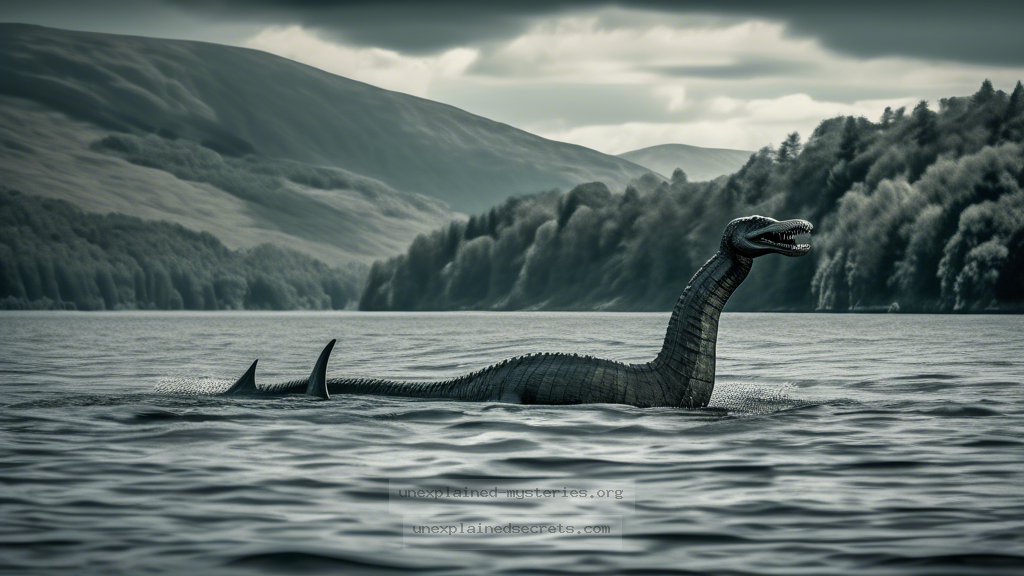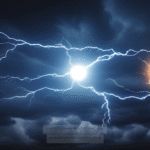What Secrets Do the Sonar Detections of the Loch Ness Monster Hold?
What Secrets Do the Sonar Detections of the Loch Ness Monster Hold?
The Loch Ness Monster, often affectionately dubbed “Nessie,” has tantalized the public imagination for decades. Sightings of this elusive creature have sparked intense speculation and countless investigations. Among the most compelling pieces of evidence in the search for Nessie are sonar detections. What do these detections reveal? Are they proof of a large, unknown creature lurking beneath the surface of Loch Ness? This question matters because sonar data represents one of the most scientific approaches to investigating this age-old mystery, bridging the gap between folklore and potential reality.
Historical Context: The Legend of Nessie
The legend of the Loch Ness Monster dates back to ancient times, with the first recorded sighting attributed to Saint Columba in 565 AD. According to the tale, Columba encountered a beast in the loch that threatened one of his followers. The story, while legendary, set the foundation for centuries of fascination with Loch Ness.
Over the years, numerous sightings have been reported, particularly during the 20th century, when the infamous photograph known as “The Surgeon’s Photograph” emerged in 1934. This image, though later revealed to be a hoax, spurred a wave of interest and investigations, including the use of sonar technology. As technology advanced, so did the methods of searching for Nessie, leading to the deployment of sonar in the hope of capturing definitive evidence.
Core Concepts: Understanding Sonar Technology
Sonar, an acronym for Sound Navigation and Ranging, is a technology that uses sound waves to detect objects underwater. There are two primary types of sonar: active and passive. Active sonar emits sound waves and listens for echoes that bounce back from objects, while passive sonar listens for sounds made by objects in the water.
In the context of Loch Ness, researchers have utilized both types of sonar to search for signs of life below the surface. The technology can help identify large objects, schools of fish, and even underwater structures, providing a clearer picture of the loch’s ecosystem.
The Most Notable Sonar Expeditions
Several notable sonar expeditions have taken place in Loch Ness, each contributing to the ongoing debate about the existence of Nessie. One of the most significant was conducted in 1987, known as the “Operation Deepscan.” This extensive survey involved a fleet of boats equipped with sonar technology that covered nearly the entire loch.
The results of Operation Deepscan were intriguing. The team detected a large, unidentified object approximately 600 feet below the surface—an anomaly that could potentially have been Nessie. However, this finding was never conclusively linked to a creature, leading to further speculation and investigation.
Analyzing the Sonar Detections
While sonar detections have yielded fascinating data, the interpretation of these findings is complex. The large unidentified objects detected in the loch could represent various phenomena, including underwater vegetation, geological formations, or even large fish. For instance, studies have shown that certain fish species can reach considerable sizes, leading to potential misidentifications.
Furthermore, sonar can sometimes produce false positives, where the sound waves reflect off the bottom of the loch or debris, creating the illusion of a large creature. Therefore, while sonar offers promising leads, it is crucial to approach the findings with a degree of skepticism and a thorough understanding of the technology’s limitations.
Comparative Analysis: Loch Ness vs. Other Cryptids
To better understand the significance of sonar detections in Loch Ness, it is helpful to compare it to other cryptid investigations, such as those involving Bigfoot or the Chupacabra. In these cases, sightings and anecdotal evidence often dominate discussions, whereas Loch Ness uniquely benefits from scientific inquiry through sonar expeditions.
| Cryptid | Evidence Type | Scientific Approach | Sonar Use |
|---|---|---|---|
| Loch Ness Monster | Sonar Detections, Sightings | Yes | Extensively |
| Bigfoot | Sightings, Footprints | Limited | No |
| Chupacabra | Animal Attacks, Sightings | Limited | No |
This comparison highlights the unique position Loch Ness occupies in the realm of cryptozoology, where scientific methods like sonar are applied to investigate the potential existence of an undiscovered creature. The sonar approach provides a more systematic method of inquiry that could yield more definitive evidence than anecdotal accounts alone.
Common Misconceptions About Sonar Detections
Many misconceptions surround sonar detections in Loch Ness, primarily stemming from a lack of understanding of the technology and its limitations. One common belief is that sonar can definitively prove the existence of Nessie. In reality, while sonar can detect large objects, it cannot determine the nature of those objects without further investigation.
Clarification: Sonar can detect anomalies but cannot specify what they are without additional context.
Additionally, some enthusiasts claim that sonar data has been deliberately suppressed or misinterpreted by skeptics. While it is true that some findings have been inconclusive, the scientific community generally embraces transparency and peer review, ensuring that sonar data is scrutinized and evaluated fairly.
Best Practices for Investigating Loch Ness
For those interested in investigating the Loch Ness Monster, there are several best practices to consider. Firstly, understanding the limitations of sonar technology is crucial. While it can provide valuable data, it is not infallible and should be used in conjunction with other methods, such as visual observations and environmental studies.
Secondly, collaboration with scientists and researchers can enhance the credibility of investigations. Engaging with experts in marine biology, cryptozoology, and sonar technology can lead to more rigorous and comprehensive research efforts.
Lastly, maintaining an open mind while adhering to scientific rigor is essential. The search for Nessie should balance curiosity with skepticism, acknowledging that extraordinary claims require extraordinary evidence.
Future Developments and Ongoing Research
The quest for the Loch Ness Monster continues, with ongoing research and advancements in technology likely to shape future investigations. Recent developments include the use of drone technology, which can capture high-resolution images and conduct aerial surveys of the loch. This method could complement sonar findings by providing visual data that may help to identify or rule out potential anomalies.
Additionally, advancements in environmental DNA (eDNA) analysis present exciting opportunities for future research. By analyzing water samples for genetic material, researchers may be able to identify unknown species living in Loch Ness, which could either support or debunk the existence of Nessie.
Conclusion: The Enigma of Loch Ness Remains
The sonar detections of the Loch Ness Monster remain a fascinating aspect of cryptozoological inquiry. While these findings have yet to provide conclusive evidence of Nessie’s existence, they have opened doors to scientific exploration and understanding of the loch’s ecosystem. The blend of folklore and technology continues to intrigue both enthusiasts and skeptics alike.
As investigations evolve with new technology and methodologies, the mystery of Loch Ness endures, inviting future generations to explore the depths of this iconic body of water. Whether Nessie is a figment of imagination or a real creature remains to be seen, but the sonar data certainly adds a layer of intrigue to this age-old enigma. 🦕
Other Articles
What Causes the Unexplained Phenomenon of Ball Lightning?
Recent Posts
- What Happened to Flight MH370? The Conspiracy Theories That Still Haunt Us
- What Secrets Lurk Within the Walls of the Infamous Trans-Allegheny Lunatic Asylum?
- What Evidence Supports the Existence of Bigfoot in the Pacific Northwest?
- What Happened to the Indus Valley Civilization? Unraveling the Mysteries of Ancient Urban Life
- Can Telepathy Be Scientifically Proven Through Laboratory Evidence?







